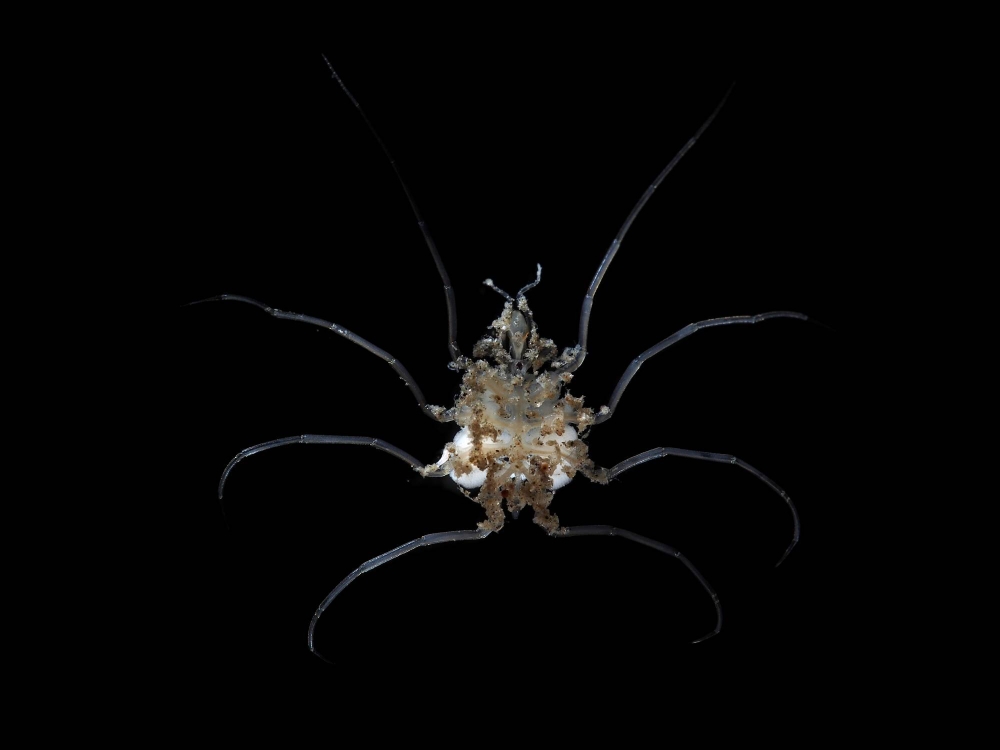The waters surrounding the Japanese archipelago are swarming with life: fish, mammals, birds and a wealth of invertebrates, from crabs and shrimp to sea spiders, a strange group of arthropods that resemble their terrestrial, web-spinning cousins.
Now you can add a new species of sea spider to that list following a recent discovery by Japanese researchers.
Most sea spiders look like a tangle of legs, with little, if any, body to speak of.
But they are not actually spiders — nor are they even arachnids, insects or crustaceans. Instead, they belong to their own class, the Pycnogonida. The name of the order to which they belong, Pantopoda, means “all legs.” Most species possess eight legs, but some have more.
The waters of Japan are home to some 172 species of these bizarre invertebrates, which typically feed on debris and smaller organisms. There are around 2,000 species worldwide.
Despite their creepy-crawly appearance, they are harmless to humans. And most people will never encounter one outside of a public aquarium. Even there, they are uncommon, though they can occasionally be found for sale in the aquaculture market.
Research on their habits is ongoing and more species likely remain to be discovered. Keiichi Kakui of Hokkaido University recently described a new species crawling about in the mud near the entrance of a submarine cave on Shimojijima island in Okinawa Prefecture.
He and his collaborator, Yoshihisa Fujita of the Okinawa Prefectural University of Arts, who collected the organism, named it Pantopipetta hosodai, after their former colleague, sea spider expert Yushi Hosoda. It is the first species in its genus known from an anchialine environment — that is, an inland body of water connected by subterranean passages to the ocean.
The single specimen was collected at a depth of 10 to 20 meters in March 2021. Only later was it extracted from the mud sample and identified by Kakui. “Detailed morphological observation revealed that it was an undescribed species,” he says.
Collecting the specimen was challenging. “The cave is not wide and is completely dark except near the entrance,” Kakui says. “Fin kicks easily disturb the mud, which can cause the divers to lose sight. Well-considered sampling plans and diving techniques were necessary.” Still, the researchers managed to bring this tiny, 3-millimeter-long organism to the surface.
Kakui thinks it may feed on small stationary creatures like sponges also found in the vicinity.
“Sea spiders are generally carnivorous grazers. As they are not fast-moving organisms, they consume sessile (stationary) or slow-moving animals,” he notes.
Because these species are so tiny, and live in such inaccessible habitats, their life history is largely unknown. Many species, including this one, possess a proboscis — a tubular mouthpart — that they use to extract nutrients from their prey.
While these obscure creatures provide invaluable insights into the unique cave ecosystems they inhabit, one of their relatives has a bit more “main character energy” and has become a villain to the clam industry.
Nymphonella tapetis has become a pest for Manila clam (Ruditapes philippinarum) farms in Tokyo Bay. Its juvenile forms are parasites in bivalve molluscs like the clams.
Research in the wake of a 2007 mortality event found that Manila clams heavily parasitized by sea spiders were less capable of burying themselves in the sand, an essential survival mechanism. Parasitized clams had less body mass and lower strength in the muscles used to close the shell. While Manila clam production in this productive region had already been decreasing due to such factors as disturbances from waves and oxygen deficiency, sea spiders seem to have accelerated their decline. They may have traveled to other areas of Japan when juvenile clams were introduced in order to bolster existing populations.
Analysis of another Japanese species, Ammothella biunguiculata, which parasitizes sea anemones, has shed light on the complex life cycles of these animals.
As this species matures, it goes through a series of instars, or larval stages. During the first instar, it rides around on the ovigers of the males — modified legs that appear to have evolved for this purpose and are also sometimes used in grooming. These sea spiders are then parasitic from their second through 10th stages. After that, they forage on their own.
The anatomy of these extraordinary creatures has been fodder for extensive debates about arthropod evolution. Some have suggested that they are “living fossils” because their chelifores — small, claw-like appendages at the front of the body — are connected to the foremost segment of the brain.
In other arthropods, the foremost appendages are connected to the middle portion of the brain. Other arthropods possess a vestigial appendage called a labrum that potentially represents a limb once connected to the front portion of the brain but lost over millennia of evolution. This suggests that sea spiders may represent an ancestral form of arthropod. Unusually, they also exchange oxygen through their legs, which also house their reproductive organs.
And as Japan bakes under unrelenting summer heat, some species are under investigation due to their production of amino acids that are protective against ultraviolet radiation — making them candidates for natural sunscreen products.
So it is that this silkless spider has nonetheless managed to ensnare the human scientists attempting to understand its strange position in the web of life.

